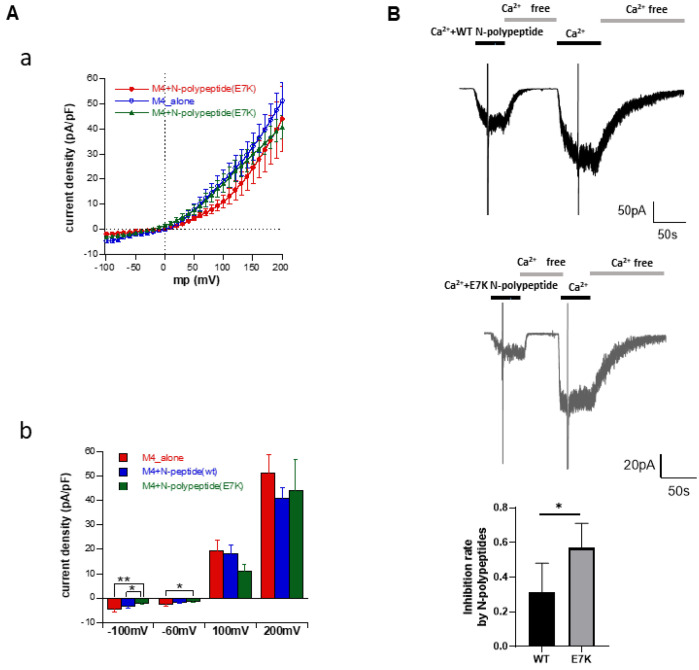Figure 5.
Different degrees of inhibition by WT- and E7K-N-terminal polypeptides of TRPM4 channels. (A) Current-voltage (I-V) relationships of full-length WT-TRPM4 channel co-expressed in HEK293 cells with either WT- or E7K-N-terminal polypeptides (the first 100 amino acid residues), or an empty vector alone (a). TRPM4 current was induced by 1 μM Ca2+ under the whole-cell conditions. The densities of inward and outward TRPM4 currents were compared at membrane potentials of −120, −60, 100, and 200 mV (b). The E7K polypeptide was more effective than WT polypeptide at inhibiting whole-cell TRPM4 currents. *: p < 0.05 with ANOVA followed by Tukey’s post hoc tests (n = 7). Only the pairs of columns that show statistically significant differences are shown. (B) Direct application of short synthetic N-terminal polypeptides containing the ‘WT’ and ‘E7K’ sequences suppressed single-TRPM4 channel activities induced by 100 μM Ca2+ at −60 mV. Representative data from two inside-out patches showing greater inhibition by E7K- than WT polypeptides. *: p < 0.05 with unpaired t-test, respectively (n = 5).

